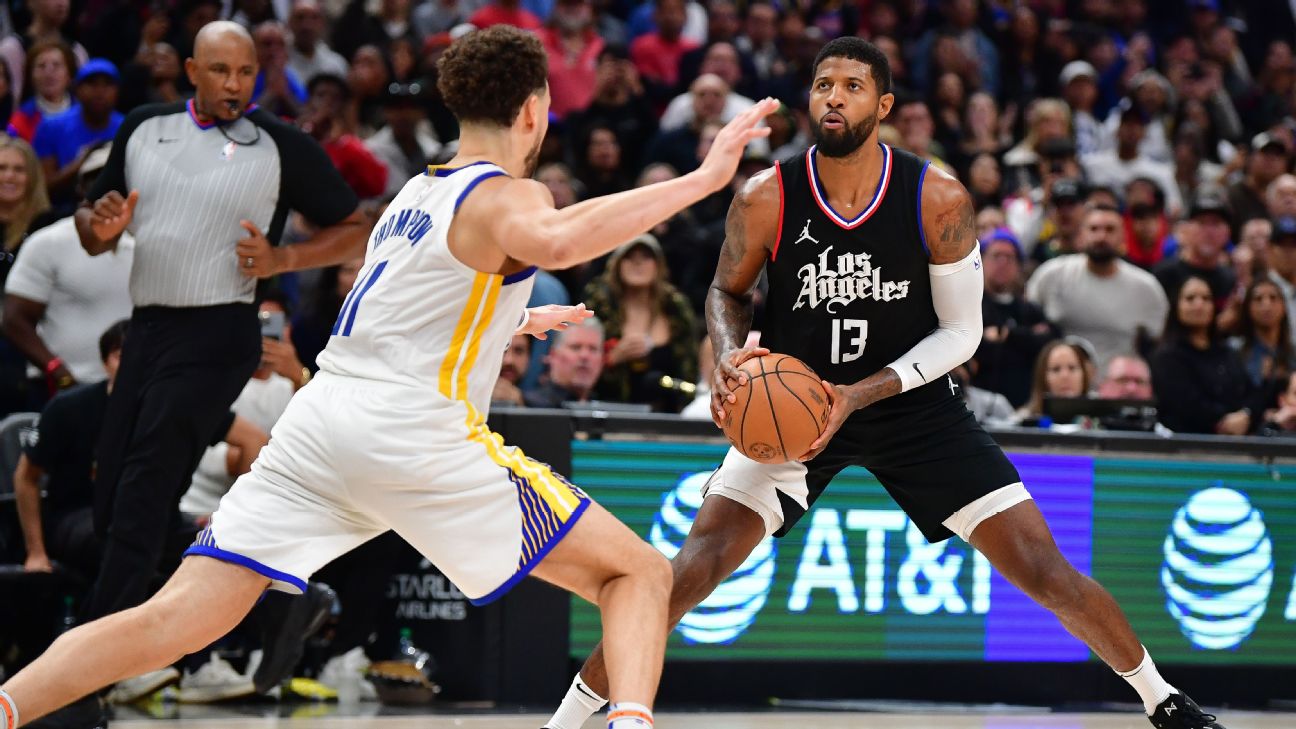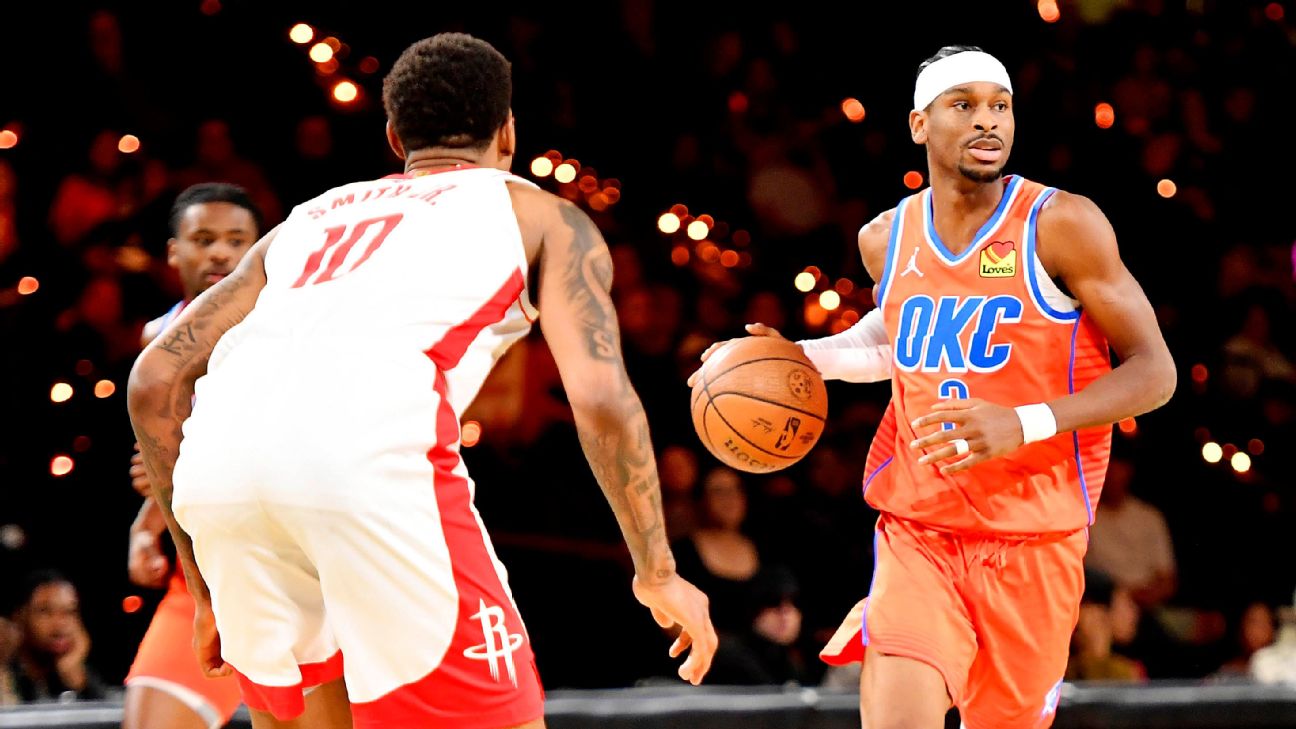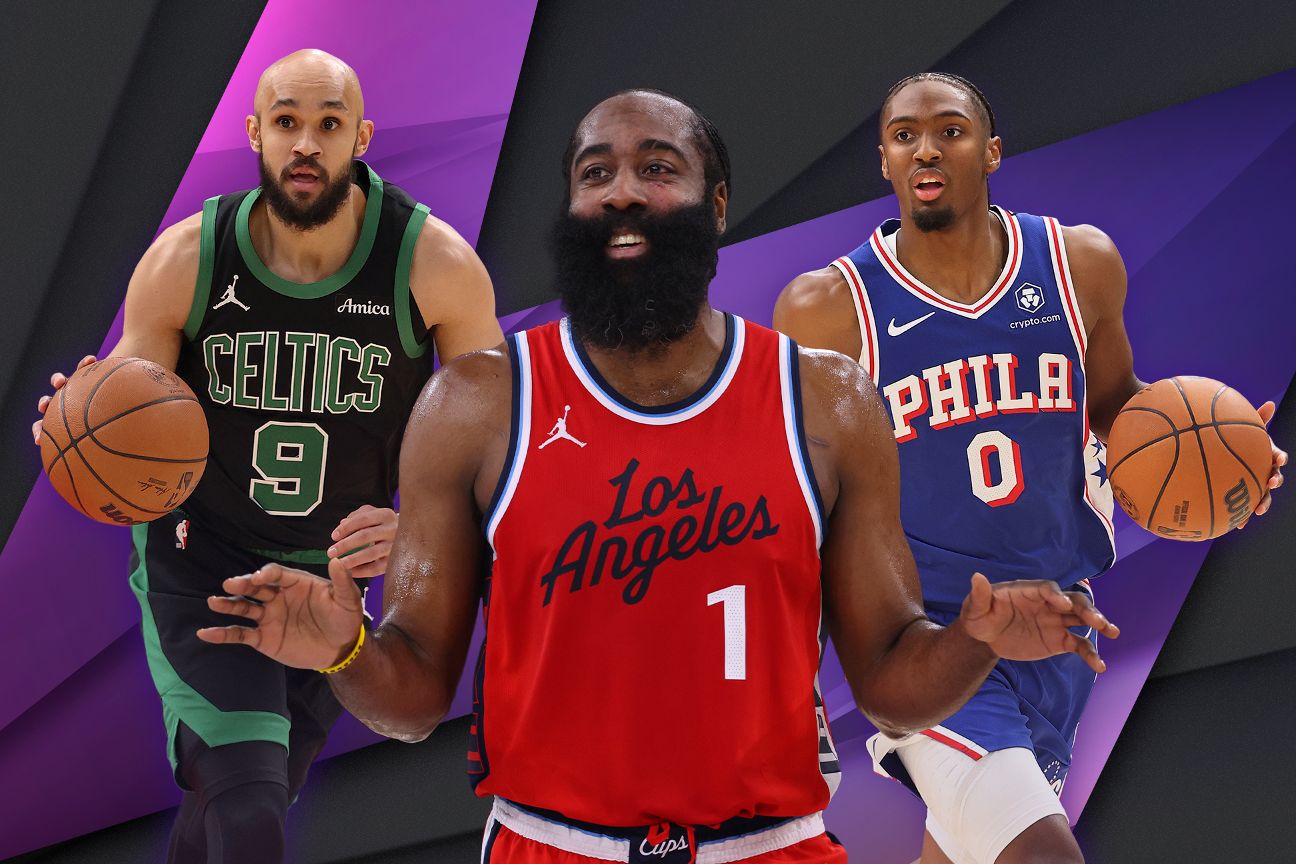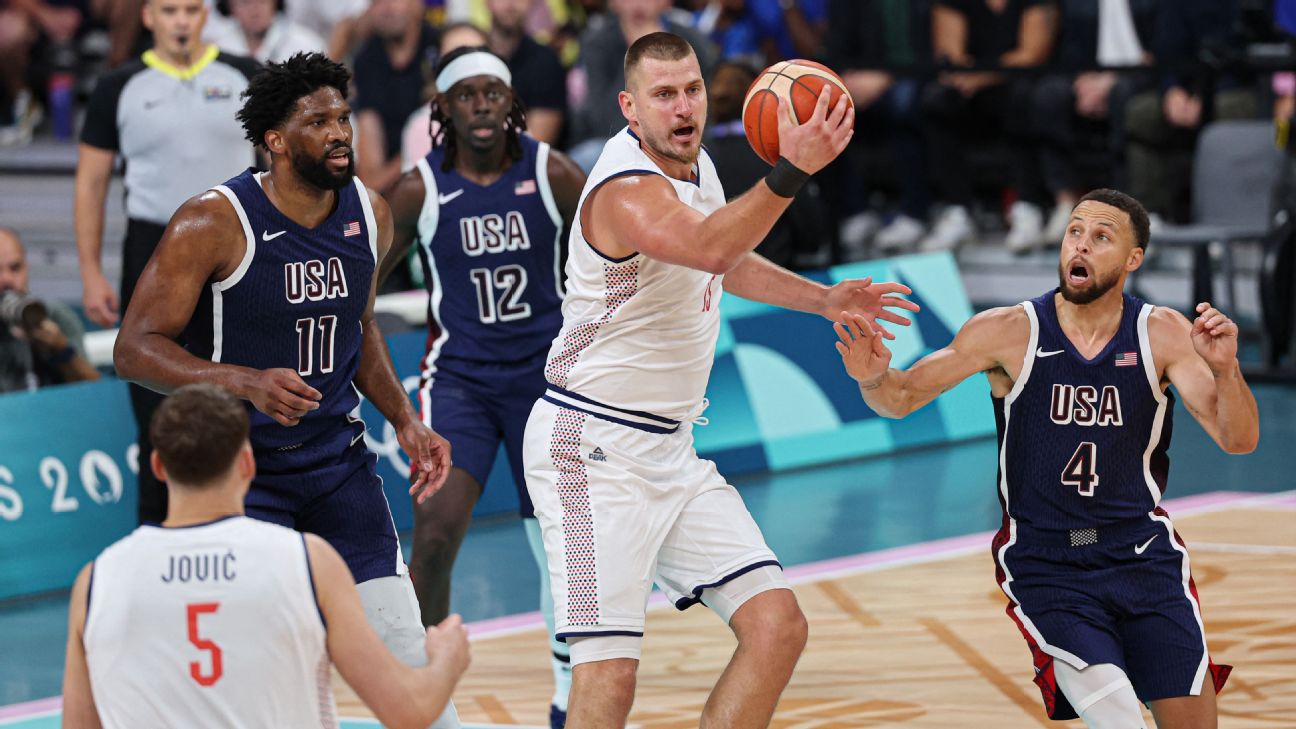Last month, the Denver Nuggets — fresh off their Game 7 loss at home to the Minnesota Timberwolves in the Western Conference semifinals — held a news conference with coach Michael Malone, general manager Calvin Booth and vice chairman Josh Kroenke.
Like most end-of-season meetings with the media, it was part examination, part forecast into the offseason — and the new team-building rules that will not only impact the 2023 champions but every team across the NBA.
“I think one important footnote about this group,” Kroenke said, “is the core of this team was assembled under a different CBA. We drafted, we developed and we built this team under a different set of rules. Those rules have kind of changed on the fly. …
“We don’t think we’re far off, But there are going to be some constraints coming in with the new collective bargaining agreement and the new rules that we’re going to have to be very aware of, and we’re going to have to plan accordingly.
“And they do make it difficult to retool a championship roster.”
For the NBA, that’s precisely the point.
Since the summer of 2016, when a salary cap spike created the conditions for the 73-win Golden State Warriors to sign Kevin Durant with minimal changes to their roster, the NBA has negotiated two separate collective bargaining agreements with the same objective in mind: Every team, in every market, can compete for championships.
The tweaks to the CBA have also helped contribute to a record stretch of parity. Last week, the Boston Celtics became the sixth different champion in the past six seasons, matching 1975 to 1980 as the longest such period in NBA history.
“I’m thrilled with the level of competition,” commissioner Adam Silver said in April during the NBA’s board of governors meeting. “I’m not anti-dynasty, but you want dynasties to be created, to the extent possible, with a level playing field.”
The league has implemented rules changes to make life difficult for high-spending teams and to cause even the shrewdest of front offices to weigh the potential ramifications of each decision. And while some of those restrictions took effect last summer, more will be enforced this offseason, the effects of which are just beginning to be felt.
The most impactful of those changes is the addition of the first and second “aprons” above the luxury tax line, both of which cut heavily into teams’ flexibility when building out rosters.
“The NBA is not telling front offices that they have to break up their teams,” one team executive told ESPN. “What they are saying is there are not only financial consequences but also severe restrictions in how you can add outside of your own players.”
ESPN currently projects six teams to land above the first apron (at roughly $178.7 million) and another six to be above the more restrictive second apron (at roughly $189.5 million).
Let’s dive into where each of those 12 franchises stand, examine other teams that could enter into this territory as the summer progresses and pinpoint a few wild-card teams that could take advantage of high spenders looking to shed salary in this new offseason landscape.
First apron teams
Atlanta Hawks
The Hawks are in dangerous territory, holding a high payroll and being not very good. Teams typically want to pay the luxury tax if they think they have a chance to win a playoff series; Atlanta didn’t make it out of the 9-10 game of the play-in tournament.
If Atlanta extends a qualifying offer to restricted free agent forward Saddiq Bey, who is coming off a torn ACL suffered in March, it’ll be over the first apron. If the Hawks don’t, they still could be over because of their jump to land a top pick in the draft. As a result, Atlanta will cut payroll during the summer, with center Clint Capela (on an expiring $22 million contract) a potential option.
Los Angeles Lakers
There’s plenty of discussion around the Lakers making moves to improve this summer in the wake of hiring JJ Redick as their new coach. The Lakers have three first-round picks to include in deals, but that doesn’t mean they’ll be able to add talent. They are close enough to the second apron that they may not have wiggle room to add without being hard-capped.
For example, if the Lakers signed Hawks guard Dejounte Murray, they would have no flexibility to re-sign restricted free agent guard Max Christie.
Memphis Grizzlies
Memphis has a choice to make on the $14.7 million team option on Luke Kennard. Picking it up would give the Grizzlies a potential trade chip but would likely move them over the first apron.
However, Memphis is expecting to make a return to the upper echelon of the Western Conference with Ja Morant, Marcus Smart and other stars healthy and back on the court next season.
Miami Heat
Miami’s roster could become wildly expensive if it brings back Caleb Martin, who has a $7.1 million player option for next season that he seems likely to turn down. If the Heat re-sign him, they could easily be a second apron team.
The Heat are an interesting flashpoint for the new rules, going back to when they signed Tyler Herro to a $120 million extension in October 2022 — months before the CBA was agreed to — that featured $2.5 million per year in unlikely bonuses that count against the aprons, a feature of the new agreement. “The Heat are penalized for a contract signed before the new rules started,” one Western Conference executive told ESPN.
The Heat are projected to be over the first apron next season. Moving forward, expect teams to take a hard stand against negotiating bonuses in free agent contracts as a result.
New York Knicks
Under the prior CBA, the Knicks could use owner James Dolan’s deep resources to keep this group together after making it to the second round of the playoffs for a second straight year. Now, the Knicks have some difficult choices ahead.
If the Knicks re-sign both center Isaiah Hartenstein and forward OG Anunoby and don’t cut any salary, they’ll be far into the second apron, limiting their ability to make a big swing for a star. As a result, New York could cut salary by trading their other center, Mitchell Robinson, or by moving on from Bojan Bogdanovic’s partially guaranteed deal.
Portland Trail Blazers
Despite being one of the league’s worst teams last season and projected to be among them again next season, Portland enters the offseason in the luxury tax and $1.3 million over the first apron. That said, Portland has some avenues to change that.
The simplest is moving on from the team’s high-priced veterans. Malcolm Brogdon is on a $22 million expiring deal and could provide some bench scoring for a team looking to contend, while Deandre Ayton ($34 million), Jerami Grant ($29.8 million), Anfernee Simons ($25.9 million), Robert Williams III ($12.4 million) and Matisse Thybulle ($11 million) all have at least two years remaining on their deals and could be options in a deal if Portland goes in that direction.
Second apron teams
Stephen A. Smith explains why the Celtics will continue to dominate going forward, and names other teams that can compete for an NBA championship.
Boston Celtics
The Celtics will be well into the second apron this year, but there’s no imminent threat to break up the reigning champions. The Celtics have their top six players under contract, along with reserve guard Payton Pritchard. They could also get back reserve sharpshooter Sam Hauser, depending on how they handle his team option for next season.
The pressure point will come in 2025-26, when the final phase of the new CBA — which includes far more punitive luxury tax rates — kicks in.
Jayson Tatum is certain to sign a five-year supermax extension this summer, and Derrick White could sign a hefty deal too. If that happens, Boston’s payroll is projected to be around $225 million. And with repeater tax payments, the Celtics could approach $450 million combined in payroll and tax payments, which would easily shatter the record of $382 million set this season by the Warriors.
Denver Nuggets
As Kroenke laid out, Denver has a team crafted under the old CBA, led by three players — Nikola Jokic, Jamal Murray and Michael Porter Jr. — on max contracts. As a result, Denver will soar into the second apron this offseason if it retains Kentavious Caldwell-Pope, who seems likely to opt out of his contract and test free agency.
Denver also has to manage potential extensions for Murray and Aaron Gordon, both of whom can be free agents in 2025. And if Denver doesn’t keep Caldwell-Pope, the Nuggets would likely only have the $5.2 million taxpayer’s mid-level to replace his All-Star-level production.
Milwaukee Bucks
The Bucks have typically been very aggressive under general manager Jon Horst. But exceeding the second apron makes it very difficult for Milwaukee to sustain that mindset. For a team trying to chase down Boston atop the East, that could make for a complicated offseason.
For example, Milwaukee cannot combine the salaries of Bobby Portis ($12.5 million) and Pat Connaughton ($9.4 million) to add a star at a higher salary.
Minnesota Timberwolves
Not only do the Timberwolves have a standoff between Glen Taylor and the duo of Marc Lore and Alex Rodriguez to see who will own the team, but they also have a massive payroll to navigate, thanks to max extensions kicking in for stars Anthony Edwards and Karl-Anthony Towns.
As a result, Minnesota is already over the second apron and is on pace to pay $56 million in luxury taxes — that is before even attempting to re-sign key reserves Kyle Anderson, Monte Morris and Jordan McLaughlin.
LA Clippers
The new CBA was designed to discourage the type of team-building executed by the Clippers and the Warriors, and we’ve seen the results, with LA drawing a line in the sand with All-Star Paul George on his next contract. A four-year $221 million max contract for George puts the Clippers deep in the luxury tax and the apron for the foreseeable future.
“We want Paul, we value Paul,” Clippers president of basketball operations Lawrence Frank said in May. “Paul’s done some tremendous things here. He’s an elite player, and our biggest thing is we always want to be able to treat players well and pay them fairly, and we also have to build out a team, especially, this is a new CBA.”
LA’s free agency decision on James Harden is also impacted. Under the old rules, the Clippers could have retained both players and supplemented the roster further. Now, they must pause and reassess.
Phoenix Suns
The Suns were one of the first teams to be impacted by the new rules last summer, when they famously went on a minimum signing spree after trading for Bradley Beal. Now, after falling in a first-round sweep to the Timberwolves, Phoenix doesn’t have many paths to improvement this summer.
The Suns already have a luxury tax bill of $105 million — and that’s before adding potentially millions more by re-signing free agent Royce O’Neale. Outside of their three stars, the only players the Suns can currently trade are Jusuf Nurkic ($18.1 million), Nassir Little ($6.7 million) and David Roddy ($2.8 million) — and none can be traded together.
The wild cards
Golden State Warriors
The Warriors could go in extremely different directions in the next few weeks. If they guarantee Chris Paul’s $30 million for next season and re-sign Klay Thompson, they easily could be back in the second apron. If they move on from both, they could be out of the luxury tax entirely.
Warriors owner Joe Lacob has been on record saying the goal is to remain below both aprons and also the luxury tax. To accomplish that, Paul would likely be waived and Thompson would agree to a starting salary of $25 million.
If both players are not brought back, Golden State would then have the flexibility to take on salary in a trade and still avoid the apron and possibly luxury tax.
Teams watching and waiting: Brooklyn Nets, Detroit Pistons, Oklahoma City Thunder, Utah Jazz, Washington Wizards
All five teams, in different ways, are well-positioned to take advantage of other franchises unable to afford players they would want to re-sign, or to be landing spots for teams looking to get rid of contracts they don’t want on their books.
Detroit, Oklahoma City, Orlando and Utah have tons of potential cap space at their disposal, while Brooklyn and Washington both have heaps of expiring contracts they could use to take on longer-term deals to give teams future flexibility — or simply, future savings.



